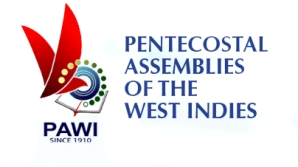![]()
A HISTORICAL OVERVIEW OF PAWI
Introduction
The Pentecostal Movement started at the turn of the nineteenth century in the city of Los Angeles in the United States of America. Historians use April 9, 1906 as its birthday.
This modern-day movement was founded on the events that took place on the day of Pentecost, some, ten (10) days after the ascension of Jesus Christ as recorded in Acts Chapter 2. Pentecostalism, which maintains that Holy Spirit’s Baptism is accompanied by the physical evidence of ‘Speaking in other Tongues’, is a normative experience available to all Christians.
Moreover, Pentecostalism also declares that other spiritual graces the ability to interpret unknown tongues, to prophesy, to heal the sick, is manifested in the life of the contemporary Church and in the lives of Christian believers.
Since the historical biblical account of the original Pentecostal outpouring and the ‘so-called’ passing of the New Testament Church era, religious historians have referred periodically to isolated occasions when Christian worship and earnest prayer were accompanied by “Speaking in other Tongues.” However, since the modern-day outpouring, the Pentecostal experience has brought a renewed emphasis on the person and work of the Holy Spirit.
Pentecostalism in the Caribbean
As early as 1910, there were zealous and devout Christians in the Caribbean region who testified to the experience of a personal Pentecost. In 1912, on the island of Montserrat, American Missionary, Rev. Robert J. Jamieson, whose Pentecostal experience revolutionized his life and ministry, found support for his cause in a small band of people of similar persuasion. Among this group were individuals such as A.B. Mulcare, Snr., William Morgan and Lydia Mings (nee Downey).
Under this new stimulus, this young church spread rapidly in Montserrat and throughout other Caribbean Islands, from St. Croix in the north to Trinidad and Tobago in the south. Rev. Jamieson and his associates, sought to establish a Pentecostal Movement. It must be noted, that this group of followers became the nucleus of what is today known as the “Pentecostal Assemblies of the West Indies”
The Pentecostal Assemblies of the West Indies
On August 17, 1946, the Pentecostal Movement in the Caribbean held its first Conference at Petit Valley in Trinidad. At that Conference, the movement became affiliated with the Pentecostal Assemblies of Canada (PAOC), and was officially declared as the West Indies District of PAOC. The West Indies School of Theology was established at that Conference.
The establishment of the West Indies School of Theology (W.I.S.T) at the Woodbrook Pentecostal Chapel in Trinidad in 1946 is considered by many to be the most significant contribution to the Caribbean region by the parent body (PAOC). The School graduated its first group of students in 1949. WIST has since been responsible for training thousands of national ministers, lay workers and church leaders through its main campus and Extension Schools dispersed among PAWI Districts. Today, WIST graduates pastor some 90% of its churches throughout the region. Others give able spiritual leadership to varied ministries, regionally and globally.
At the 1958 Conference held in Trinidad, the name of the Fellowship was changed to the Pentecostal Assemblies of the West Indies. This decision afforded the young Fellowship to become self-governing, self -propagating and self-supporting.
With POAC passing the baton of leadership to Caribbean nationals, the under-mentioned persons created history when they were either elected or appointed to serve as follows:
|
General Superintendent
|
Rev. Patrick Ryan (deceased)
|
|---|---|
|
President of WIST
|
Rev. Dennis White
|
|
Executive Director of Missions
|
Rev. Wharton G. Nicholson
|
|
Youth Ministries Director
|
Rev. Wharton G. Nicholson
|
|
Women’s Ministries Director
|
Rev. Lucille Daniel
|
|
Men’s Ministries Director
|
Rev. Levi Duncan
|
|
Christian Education Director
|
Miss Audrey Cambridge
|
|
Regional Crusaders Commissioner
|
Rev. Irvin Smith
|

